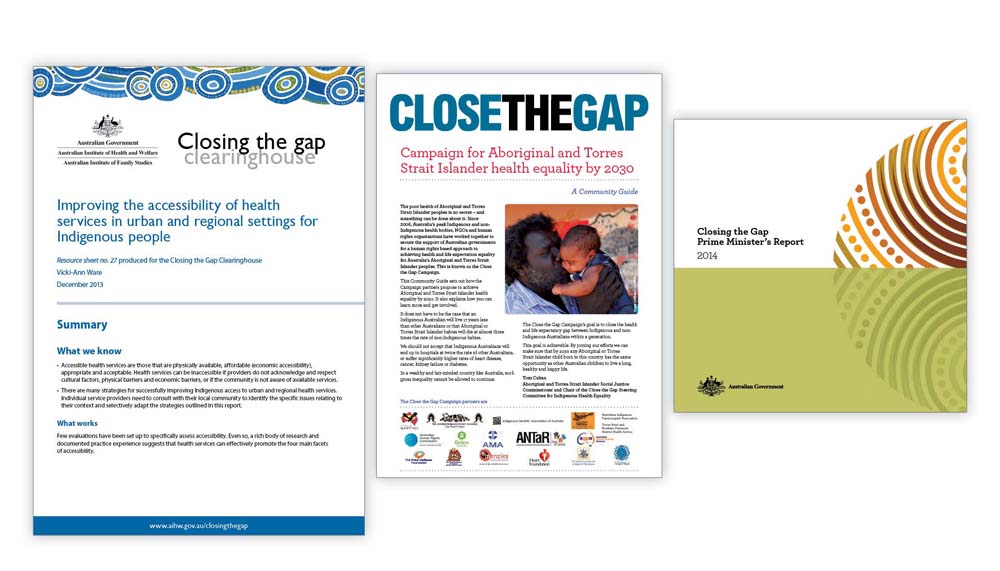Achieving equality between Indigenous and non-Indigenous healthcare outcomes will require collaboration, communication and the full deployment of nursing skills.
Since the Australian Government apologised to the Indigenous people of Australia in February 2008, there has been a greater focus from the Australian Government on achieving equality between Indigenous and non-Indigenous Australians. It is well known that one of the major gaps lies in health and access to healthcare.
In 2008, the Council of Australian Governments (COAG) announced the Close the Gap campaign, setting specific targets relating to education, healthcare, life expectancy and employment outcomes.
Closing the life expectancy gap within a generation – by 2031 – and halving mortality rates for Indigenous children under age 5 by 2018 are two of the targets. In 2014, the federal government released a report card on the progress towards these goals and the results were mixed. If the current child mortality rates continue to decrease, as they have from 1998 to 2011, the 2018 goal will be achieved. Worryingly, the life expectancy gap for adults still remains at a decade, six years after the goal was put in place, with the Northern Territory the only area on track to meet its 2031 target.
In his 2014 speech on the Closing the Gap Report 2014, Prime Minister Tony Abbott said, “A generation or two back, our tendency was to work for Aboriginal people rather than with them. We objectified Aboriginal issues rather than personalised them. We saw problems to be solved rather than people to be engaged with.”
His speech signified the recognition that to be successful in closing the gap between Indigenous and non-Indigenous Australians, the strategy needs to be collaborative.
Numerous reports over the years have supported this philosophy. The Australian Human Rights Commission released a Close the Gap Community Guide in 2014 that recognises the main cause of Indigenous ill health to be inequality. For example, Indigenous people have less access to essential health services than other Australians and too often they don’t get the healthcare they need, when and where they need it. Key elements of successful outcomes for the Close the Gap campaign listed in the guide are: a comprehensive national plan of action; a partnership with Indigenous people; a targeted approach to achieving Indigenous health equality; and support for Aboriginal Community Controlled Health Services.
The Australian Institute of Health and Welfare (AIHW) developed a guide to program elements essential for success. The AIHW’s Closing the Gap Clearinghouse Report lists principles and practices that underpin successful programs for Indigenous people. These include community involvement and engagement, a focus on building trust and relationships, and a well-trained and well-resourced workforce.
The AIHW report also identifies program elements and staff attributes that do not result in successful healthcare delivery for Indigenous people. These include fee-for-service approaches, short consultation times, highly structured programs, assumptions that fluency in English means effective communication, and ignorance of the importance of kin and kinship.
Both reports clearly indicate that to achieve equality between the healthcare of Indigenous and non-Indigenous Australians there is a need for a collaborative and inter-professional approach.
Given the extensive distribution and reach of nurses across Australia, the profession continues to have a significant role in providing care to Indigenous people. Nursing has a long history in developing and delivering primary healthcare services responsive to population health needs and particularly to underserved communities. Despite this, the full potential of the nursing profession to assist in closing the gap is yet to be realised. The availability of primary healthcare nursing services related to communicable diseases, health promotion, immunisation programs, and sexual health screening for Indigenous people is of vital importance.
The nursing profession has the knowledge and skills to contribute to the health of Indigenous people. However, within Australia’s system the nursing profession’s skill base is at times underused and this adversely affects the outcomes of services. With the breadth of nursing knowledge and the flexibility of nursing services, there remains untapped potential for nurses to collaborate with other healthcare professionals and Indigenous communities to have greater impact on closing the gap.
In order to successfully close the gap in life expectancy between Indigenous and non-Indigenous people in Australia, the nursing profession, other health professions and Australian governments must collaborate to a greater extent to improve access to health services and health education. This must be achieved through partnership with Indigenous communities, increased support, and the redesign of traditional models of health service delivery. Nursing must highlight those models of healthcare that are having a positive impact, use available data to measure outcomes, communicate and disseminate findings, and advocate for the support and resources needed to further develop those models of healthcare delivery.
Adjunct professor Debra Thoms is CEO of the Australian College of Nursing.
Do you have an idea for a story?Email [email protected]
 Aged Care Insite Australia's number one aged care news source
Aged Care Insite Australia's number one aged care news source

